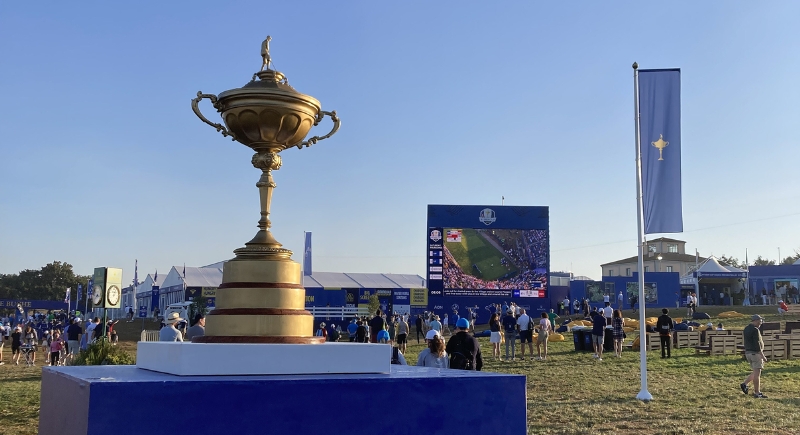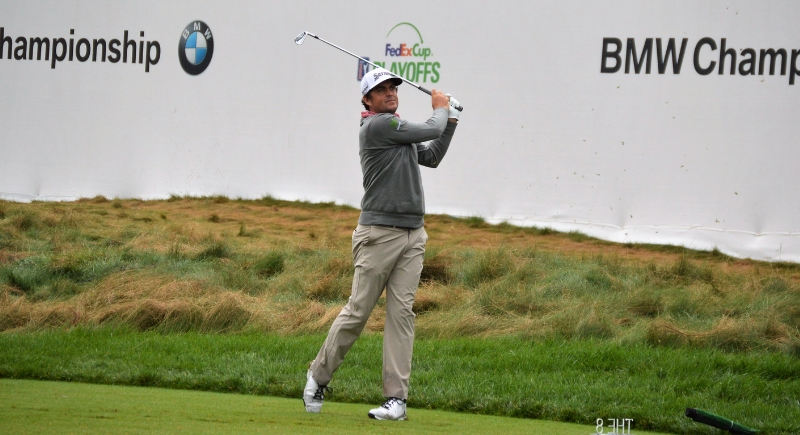What Is the Ryder Cup? An Explainer on Golf’s Most Exciting Event
The Ryder Cup is the rare golf event where players set aside prize money, slip into team colors, and carry the weight of national pride. The energy is so different that even the most decorated pros admit it’s the most nerve-wracking stage they’ve ever faced. The tension, combined with the long rivalry between the United States and Europe, is why the Ryder Cup has become golf’s most unpredictable spectacle.
It’s held every two years, and the 2025 edition lands at Bethpage Black in New York. The U.S. and Europe are ready to send 12 players each into a three-day match play showdown. The setup is unique, the stakes are heavy, and the atmosphere is more like a heavyweight title fight than a country club event. So, how does it all actually work?
The Basics

Image via Wikimedia Commons/LittleWhites
The Ryder Cup dates back to 1927 when Samuel Ryder, an English businessman and golf enthusiast, donated the trophy for a match between the United States and Great Britain. For decades, the Americans dominated the match. In 1979, the competition expanded to include all of Europe, and that decision completely changed the balance of power. Since then, Europe has won the majority of contests, including eight of the last 11 meetings.
The contest alternates between courses in the U.S. and Europe. This year, it’s Bethpage Black’s turn, a famously tough public course on Long Island that has hosted multiple majors but never the Ryder Cup until now. The next edition will head to Adare Manor in Ireland in 2027.
The Form
Unlike stroke play tournaments, the Ryder Cup uses match play. Each hole is a separate battle. Win more holes than your opponent and you win the match. Across three days, there are 28 matches in total.
Friday and Saturday feature two sessions each: foursomes in the morning and four-ball in the afternoon.
Foursomes, or alternate shot, has teammates sharing one ball and alternating swings. Four-ball lets every golfer play their own ball, with the best score on each hole counting for the team. Sunday is singles day: 12 one-on-one matches where every player tees it up.
Each match is worth one point, with ties splitting the point in half. The first team to reach 14.5 points wins the Ryder Cup. If it ends in a 14-14 tie, the team that held the Cup before keeps it.
The Captains And Teams

Image via Wikimedia Commons/Michael Stokes
This year, Keegan Bradley leads the U.S. squad after missing out as a player in 2023. His lineup includes world number one Scottie Scheffler, major winners like Justin Thomas and Collin Morikawa, and power hitters like Bryson DeChambeau. Others are Xander Schauffele, J.J. Spaun, Russell Henley, Harris English, Ben Griffin, Cameron Young, Patrick Cantlay, and Sam Burns.
Europe’s captain is Luke Donald, who guided his side to victory in Rome two years ago. His team features Rory McIlroy, Robert MacIntyre, Tommy Fleetwood, Justin Rose, Rasmus Højgaard, Tyrrell Hatton, Shane Lowry, Viktor Hovland, Matt Fitzpatrick, Jon Rahm, Sepp Straka, and Ludvig Åberg.
Captains select player pairings for the team formats and decide the order of matches. The secrecy creates suspense, as the pairings are revealed only when the matches begin.
Why It Hits Different
The Ryder Cup doesn’t pay out prize money like a regular tournament. American players do receive $500,000, though $300,000 goes to charity. European players receive no direct payment. What matters most is the chance to play for pride and to etch a name into golf history. Legends like Seve Ballesteros, Ian Poulter, and Sergio Garcia built reputations as Ryder Cup warriors, often outshining their individual tournament records.
The event also thrives on drama. Europe’s comeback at Medinah in 2012, nicknamed the “Miracle at Medinah,” and the U.S. fightback at Brookline in 1999 remain iconic. Every few years, an underdog player becomes a hero and fuels the event’s reputation as golf’s most unpredictable stage.
The Numbers Game
Across history, the U.S. leads the all-time series 27-15-2. However, since Europe joined in 1979, the balance has tilted. Europe has taken 12 of the 22 editions in that span, and it hasn’t lost on home soil since 1993. On the American side, dominance usually comes when the event stays stateside. The U.S. has won the last two times it hosted.
This year, the crowd at Bethpage Black is expected to be loud and unforgiving, with tens of thousands of fans filling the grandstands. For players, that environment makes the Ryder Cup feel more like a stadium event than a golf tournament.